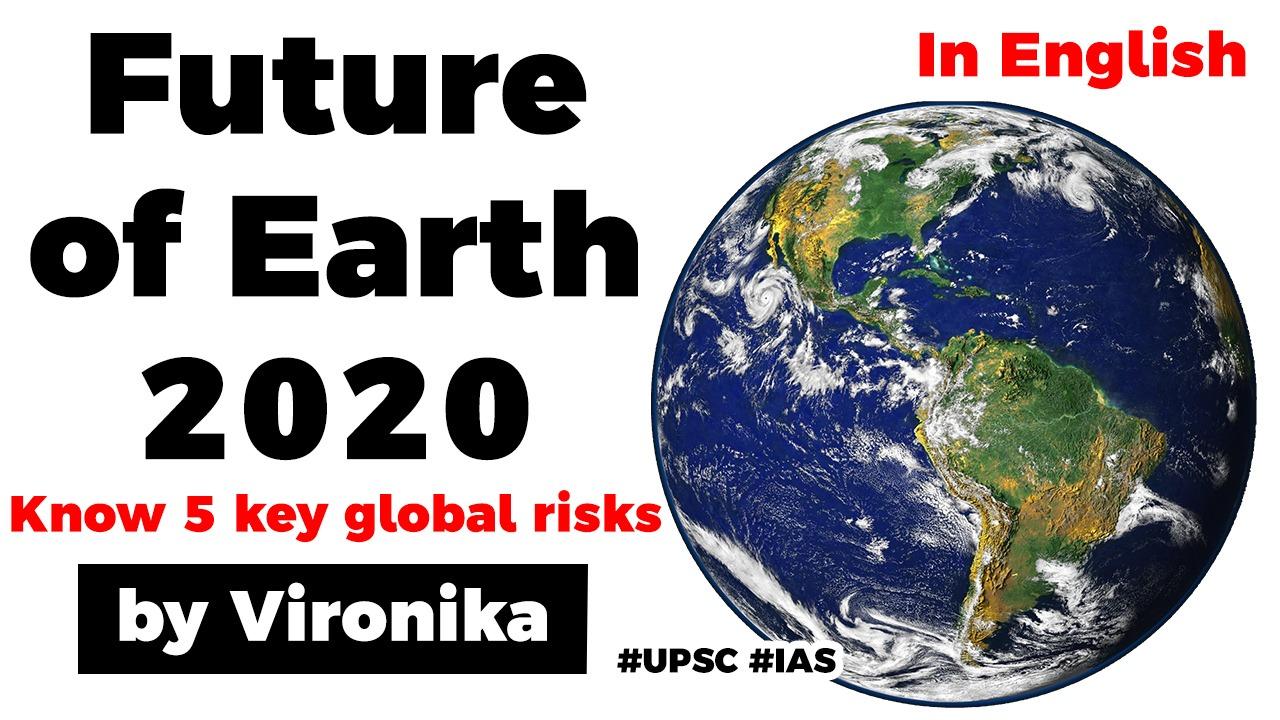Table of Contents
- The South Asia Future Earth Regional Office, the Divecha Centre for Climate Change and the Indian Institute of Science have released “The Future of Earth, 2020” report.

Highlights
- failure of climate change mitigation and adaptation
- extreme weather events
- major biodiversity loss and ecosystem collapse
- food crises; and
- water crises
- Offering examples of how the interrelation of risk factors play a role, scientists say extreme heatwaves can accelerate global warming by releasing large amounts of stored carbon from affected ecosystems, and at the same time intensify water crises and/ or food scarcity.
- Interrelation between different Global Risks
- Greenhouse Gas Emissions
- Decline in Biodiversity
- Trends Highlighted
- Reversing the trends of loss of life on the planet will require some new ways of thinking about conservation.
- Addressing societal systems
- Bolstering financial resilience should go hand in hand
- Negative impact of migration can be avoided with pragmatic planning
- On climate
- Right-wing populism
- Human impact on ecosystem
- Role of media
Top 10 risks
- Extreme weather events.
- Failure of climate change mitigation and adaption.
- Major natural disasters.
- Massive incident of data fraud/theft.
- Large scale cyberattacks.
- Man-made environmental damage and disasters.
- Large-scale involuntary migration.
- Major biodiversity loss and ecosystem collapse.
- Water crises.
- Asset bubbles in a major economy.

- Extreme weather events + failure of climate change mitigation and adaptation
- Large-scale cyber-attacks + breakdown of critical information infrastructure and networks
- High structural unemployment or underemployment + adverse consequences of technological advances
- Major biodiversity loss and ecosystem collapse + failure of climate change mitigation and adaptation
- Food crises + extreme weather events
- Environmental risks dominate the global risks landscape in terms of impact and likelihood for the third year in a row
- Global risks are intensifying, but our capacity to respond to them is declining.
- Geopolitics and geo-economic factors, such as uncertainty and nationalism are fuelling risks.
- Shorter-term fears are around geopolitical and cyber threats.
- There is a significant financing gap (US$18 trillion) in infrastructure capital
;
Latest Burning Issues | Free PDF






















 WhatsApp
WhatsApp